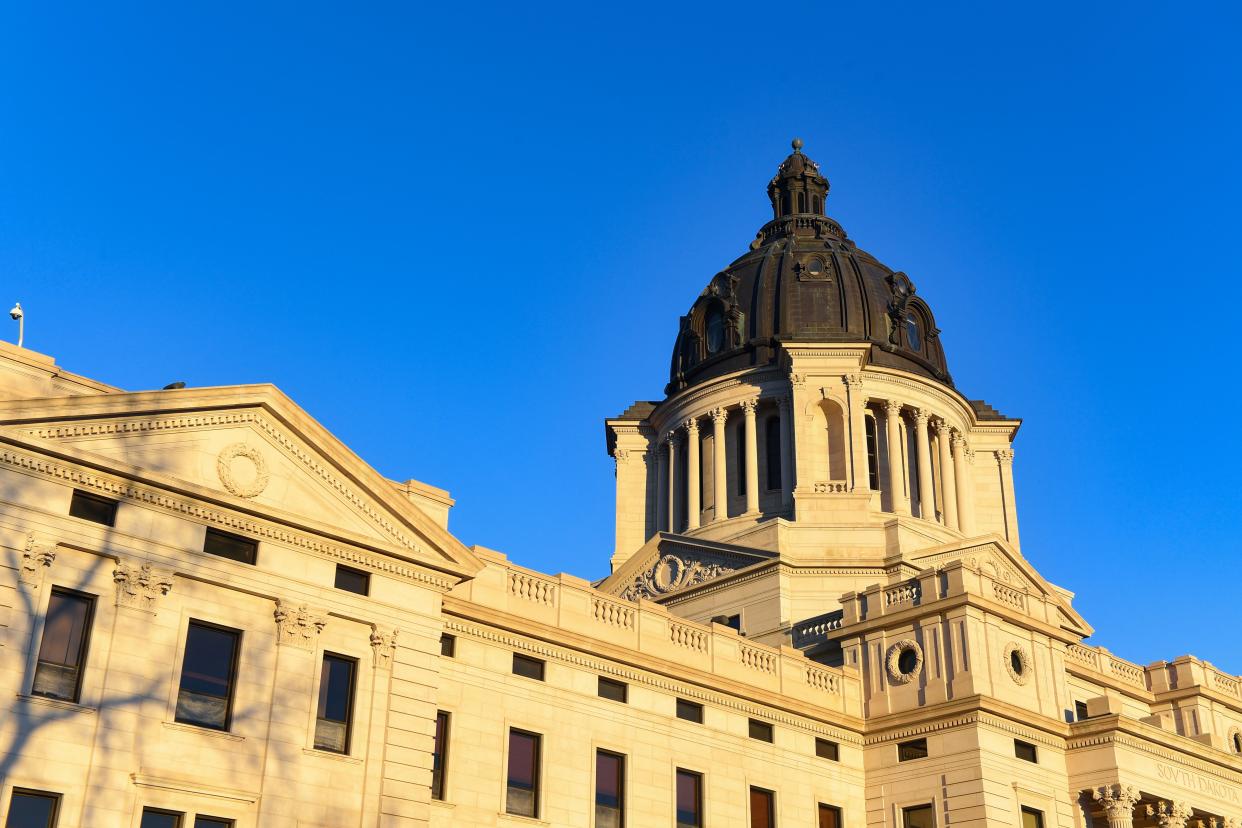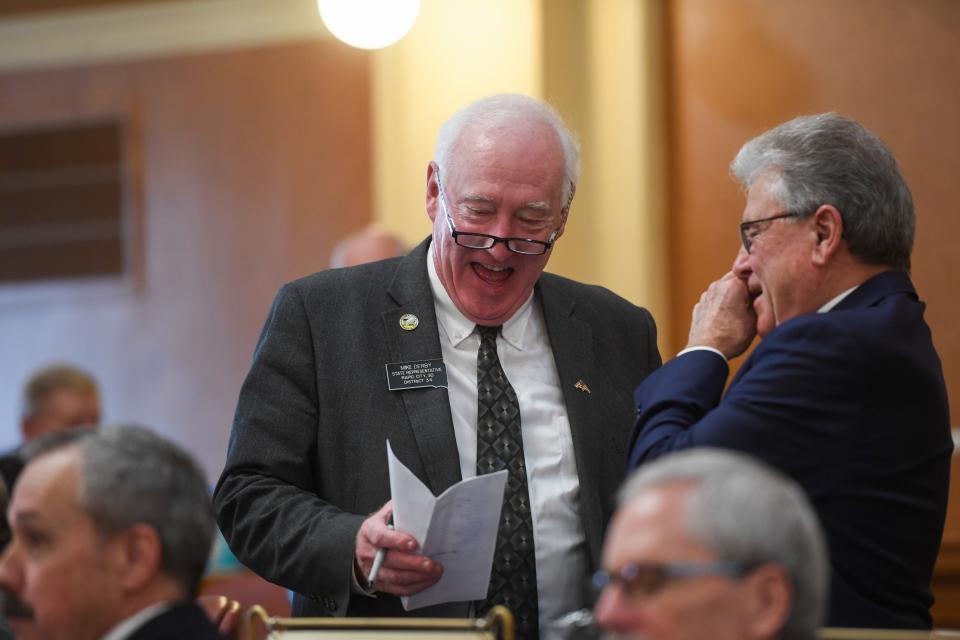SD analysts say they're cautiously conservative about 2025 budget, with a hint of optimism

- Oops!Something went wrong.Please try again later.
PIERRE — Billed as the Super Bowl for nerds, a subcommittee of lawmakers who determine the South Dakota state budget believe the state will bring in $2.42 billion in ongoing revenue in the upcoming fiscal year.
Tuesday’s recommendation came after presentations by fiscal analysts from the Legislative Research Council and the Bureau of Finance and Management who cautioned revenues may not be as historically high as they have been as federal COVID-19 stimulus money exits the economy.
The subcommittee of appropriators also revised the current fiscal year’s revenue numbers, estimating for the remainder of FY2024 the state will bring in $2.4 billion in ongoing revenue, about $120 million more than what the Legislature set in 2023, with an additional $96 million in one-time receipts for a grand total of $2.5 billion in state revenue.
The revenue estimate for FY2025, the $2.42 billion, is just less than $16 million more than what the revised FY2024 revenue looks like.
The revenue estimate was described as being able to set forward a positive budget. Both the FY2024 and FY2025 ongoing revenues were higher than what Gov. Kristi Noem put forward in her December budget address.
More: Gov. Kristi Noem asks for a $7.27 billion state budget in FY2025
Tuesday night’s revenue estimates will be voted on by the entire Joint Committee on Appropriations on Wednesday. If adopted, appropriators can then get to work setting the state’s budget and balancing if the state can afford increases for the Big Three — education, medical providers and state employees — and a possible public university tuition freeze.
Largest discussion over sales and use tax, construction excise tax
When setting the revised FY2024 revenue numbers, discussion centered around what revenue the state could pull in from sales and use tax collections.
The state temporarily lowered the sales and use tax from 4.5% to 4.2% in 2023, which led to a decline in revenue collections, according to analysts from the LRC and the BFM. Even when adjusting the revenue numbers accordingly for the sales tax reduction, revenues had dipped slightly when compared year over year.
“What you're seeing in the data is a stepping down in the growth of sales tax,” Jeff Mehlhaff, from the LRC, said. “We are getting back to normal.”
Sales tax collections dipped from 9.1% in 2023 to 6.6% in 2024 when adjusting for the state sales tax reduction, according to the LRC. Meanwhile, BFM estimated an adjusted 4.2% drop in 2024 from the same 2023 figure.
More: Thune, Rounds vote yes as U.S. Senate approves $95 billion aid package for Ukraine, Israel, Taiwan
But Derek Johnson, the state economist, noted the state had collected an additional $12 million in one-time funding. Of that, $10 million came from when the state switched sales tax rates over the summer, while the $2 million came from an audit conducted in January.
The $12 million came into play later when the subcommittee adopted the revised FY2024 sales and use tax receipts at $1.46 billion.
The largest debate on Tuesday night, resulting in two defeated motions made by House members, centered on the contractor’s excise tax collections in FY2025. The revenue collected comes from new construction projects around the state.
The House members on the subcommittee believed the state’s construction future looked rosy, while the Senate members remained more conservative.

Sen. Bryan Breitling, R-Miller, said he was cautious of the reduction of building permits in Sioux Falls in 2023. But Rep. Mike Derby, R-Rapid City, was more optimistic saying that the western part of the state had a growing number of building permits along with the future construction that will be coming to the Rapid City area as the B-21 stealth bomber will call the Ellsworth Air Force base home.
In the end, the subcommittee voted on taking the average estimate from the LRC and the BFM and set the revenue target from the contractor’s excise tax at just over $221 million.
This article originally appeared on Sioux Falls Argus Leader: South Dakota sets revenue projections for FY2024, FY2025

